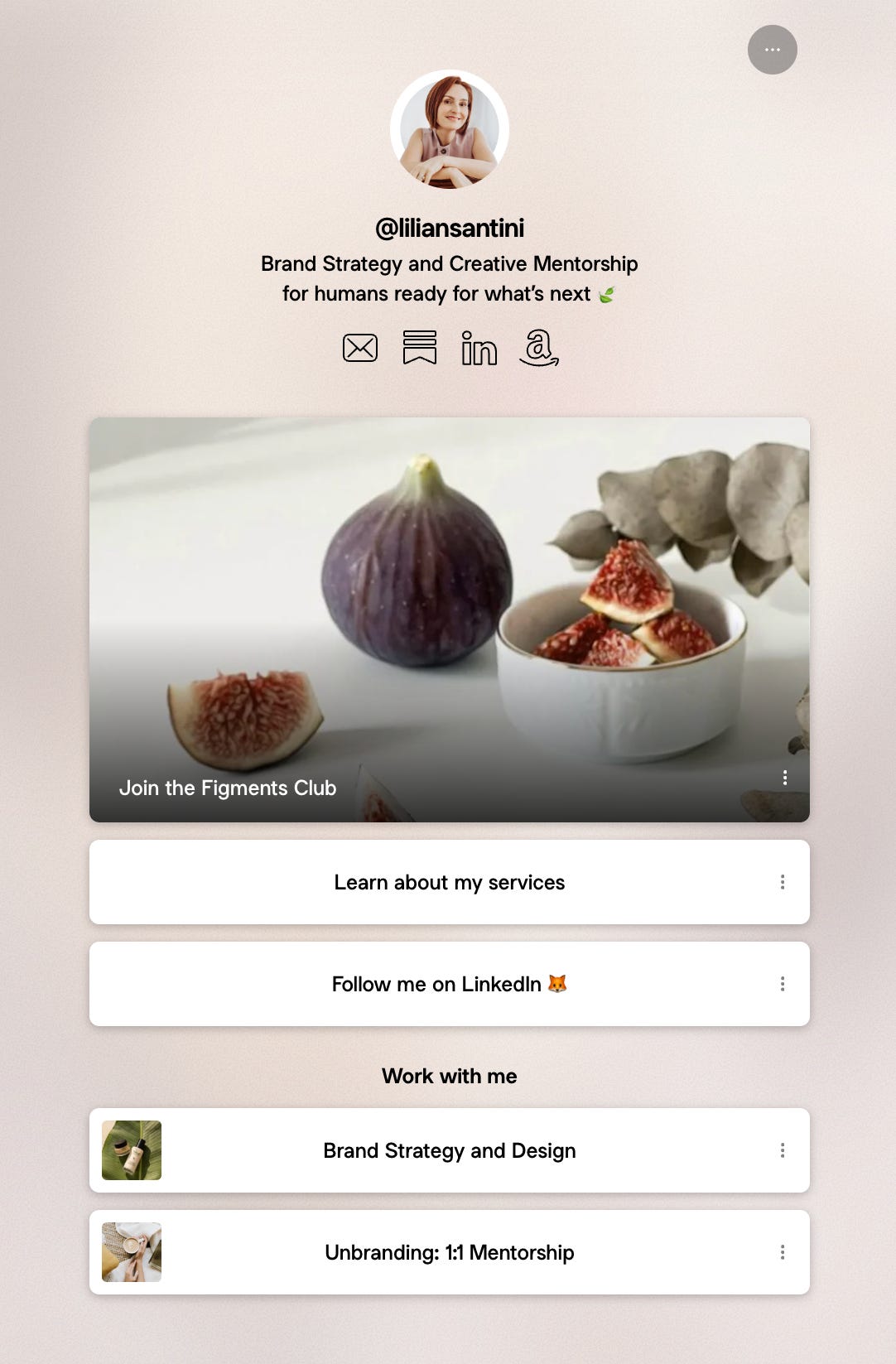How to build trust with your Linktree strategy
Essential tactics for turning your link page into a trust-building asset
Link aggregators like Linktree, HeyLink.me, or even a simple custom links page are often overlooked, but when you set them up with intention, they become trust signals for Google, AI and for people who are sizing you up. They say, plainly: I’m active. I’m connected. I care about the details.
Why link aggregators matter (beyond clicks)
It’s easy to treat these tools as digital junk drawers or glorified business cards. But in 2025, Google, AI tools, and discerning clients are scanning for something more:
Legitimacy. Are your links alive, matching your name, and leading somewhere real?
Currency. Is your info current? Outdated links and empty profiles do more harm than good.
Connection. Does your link page tell a coherent story, or is it just a jumble of platforms?
A well-curated aggregator helps Google see your whole ecosystem as credible and connected. For actual humans, it’s a gentle guided tour of what matters, not just a maze of “find me everywhere.”
Best practices: making your link page work for you
Put your anchor first
Your website should lead the list. It’s your home base, the one place where the whole picture comes together.Curate, don’t collect
List only the platforms you use and want to be found on. Skip dead accounts. Less is always more.Keep it human and on-brand
Use the same name, tagline, and image that people see everywhere else. Echo your core presence, not a random one.Keep it fresh
Revisit your link page every month or quarter. Update, prune, highlight new work, let old links go.Funnel with purpose
What do you want people to do next? Subscribe to Substack? Book a call? Make that the obvious next step.
What a great link aggregator looks like
Imagine landing here:
Website/Home Base (“See my full portfolio and current projects.”)
Substack or Newsletter (“Subscribe for weekly insights and behind-the-scenes.”)
LinkedIn (“Connect professionally or view my latest work.”)
Instagram or YouTube (“See the creative process in action.”)
Featured Resource (“Read my latest case study.” or “Book a consult.”)
Every link is clear, up to date, and actually feels inviting.
Try this: refresh your own link aggregator
Pick your platform: Linktree, HeyLink.me, Carrd, or your own site.
Choose 3–5 key links. Prioritize your “home base” and one or two channels where you’re actually present.
Write labels like an invitation, not a filing cabinet.
Make sure your name, tagline, and image are instantly familiar.
Set a reminder to review and update, not just forget it exists.
A note on professionalism
You don’t need to share your link aggregator everywhere. For LinkedIn, a direct website or portfolio link often makes more sense. For Instagram or your email signature, the aggregator is perfect.
Here’s the real value: Even if you almost never share the aggregator link, setting it up and connecting your ecosystem helps Google and people alike find and trust you. It reinforces your authority behind the scenes.
Bottom line:
A link aggregator isn’t just a list. It’s a story. Set it up to reflect the best of your multidimensional work, then let it do its quiet work for you.
Own Your Presence is an ongoing guide to authentic online visibility and authority. I’ll be sharing more pieces from the series over the next few days, and on Monday, I’m releasing a digital course that brings it all together—action steps, frameworks, and a blueprint you can use right away. Details soon.
(And if you want a quick review or some feedback on your own link setup, drop it below or reply—I’d love to see how you’re connecting your digital world.)
Own Your Presence is an ongoing guide to building authentic visibility and authority online. Find every chapter in the series here.
Build your authority online:
🔐 Own Your Presence: The Visibility Blueprint
This practical blueprint is designed for multi-passionate professionals, creatives, and anyone tired of visibility advice that doesn’t fit. Download it now.







